The challenge of defining precisely what mission-centric ministry is as a new organizational paradigm and ministry practice is daunting and complex.
I find it best to define mission-centric ministry as second tier organizational practice, and then begin to construct a coherent understanding of what is meant by mission-centric ministry when we compare it to the first tier minister-centric model of ministry.
If you are familiar with Spiral Dynamics and Integral theory, you know the distinction between 1st and 2nd tier dynamics of development.
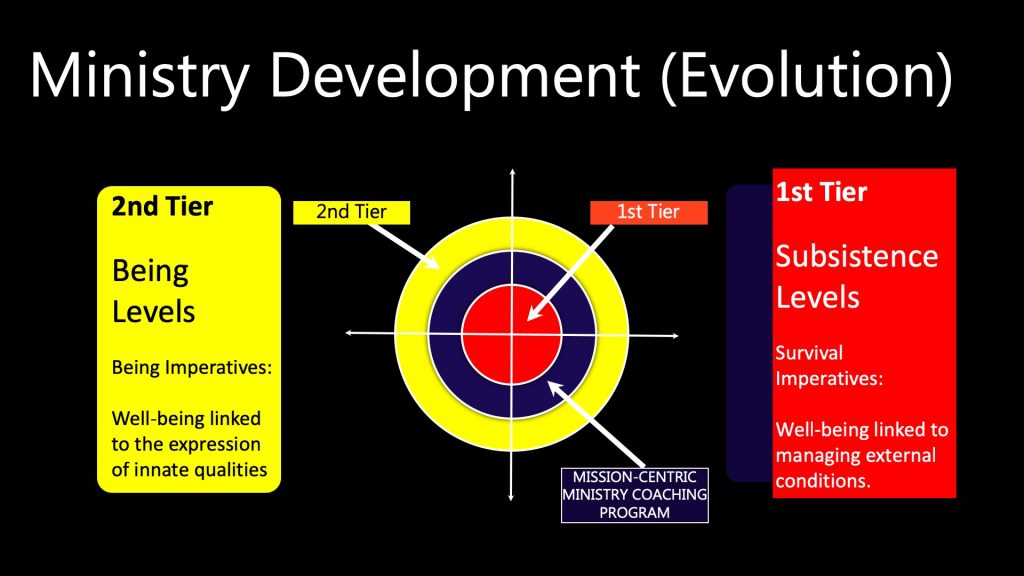
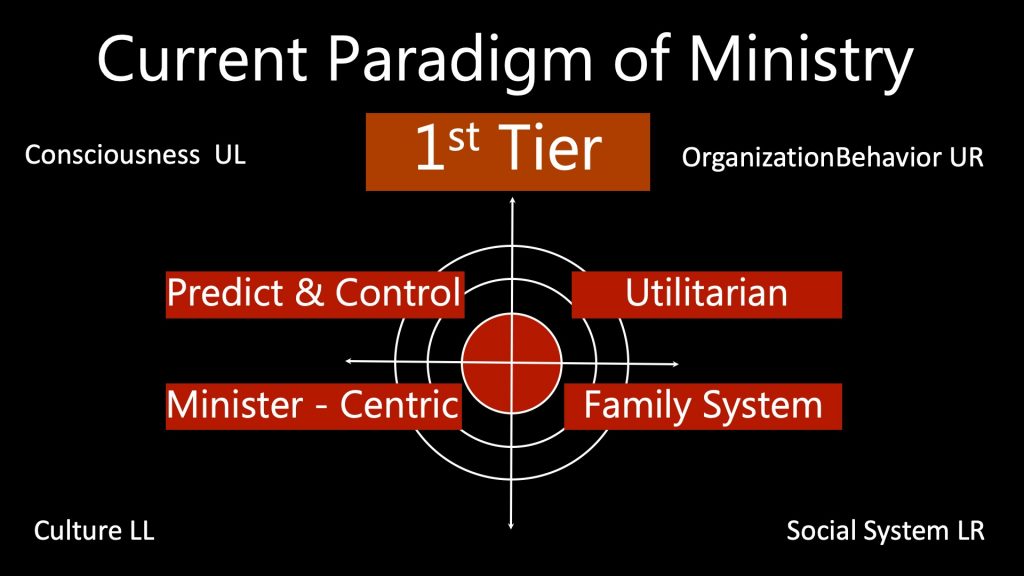
First tier dynamics are described as “subsistence” levels. Life conditions have to be a certain way for us to feel safe and okay. First tier behaviors are all about avoiding discomfort and sourcing it in outer conditions. Having someone or something the matter with us or victim consciousness is common in first tier organizations. First tier dynamics are driven by the story of separation.
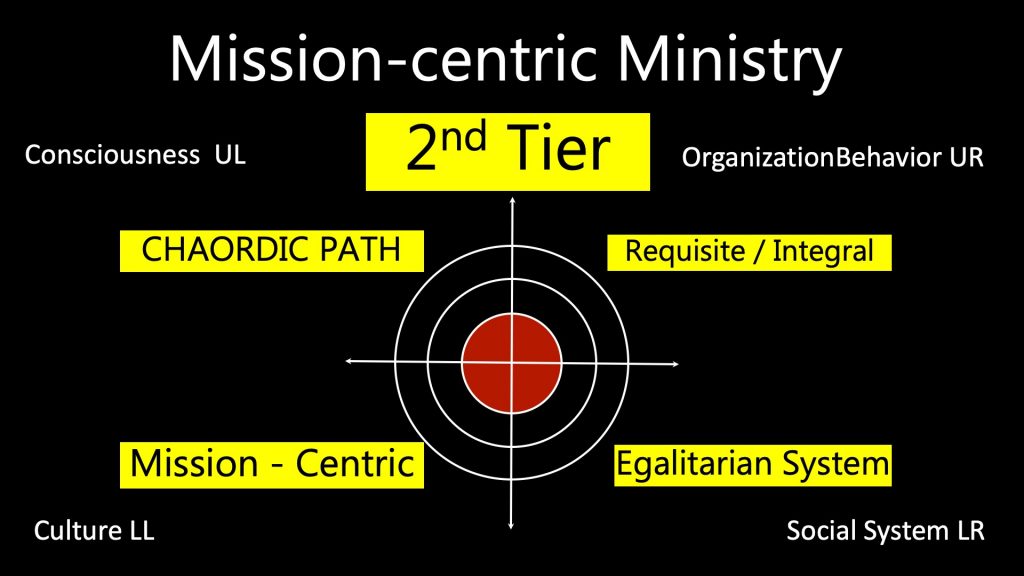
Second tier dynamics are called “being” levels. From the context of oneness and interbeing, life conditions invite us into ownership and co-creation. It is impossible to have people or situations against us, because we are all in this together. 2nd tier living is intentional, above the line, and embraces the chaordic field and the well-spring of emergence, synergy, and flow.
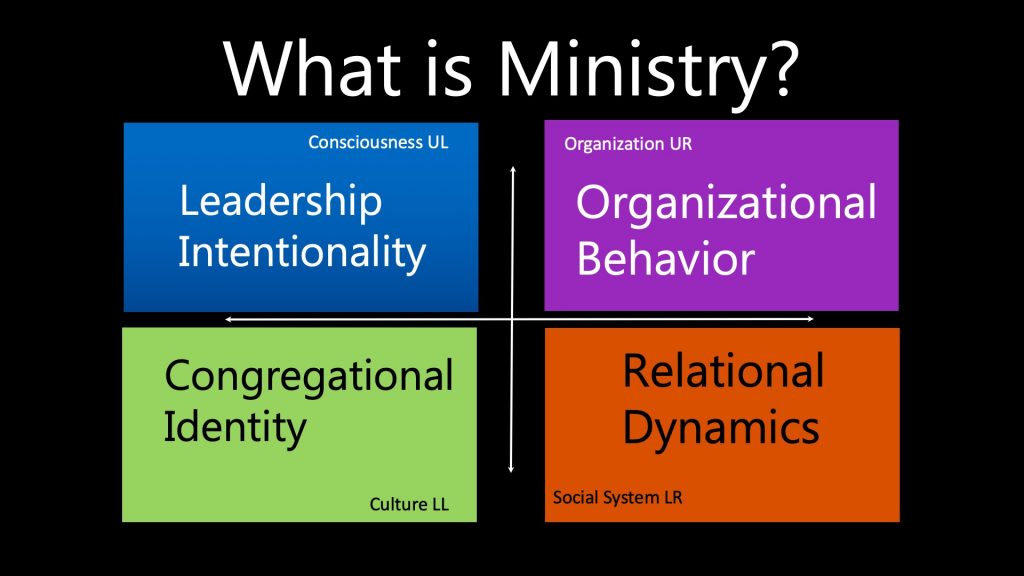
The integral framework for understanding ministry as a living system looks at four domains of development (the quadrants).
Each quadrant represents an arena of development, moving from first tier to second tier imperatives.
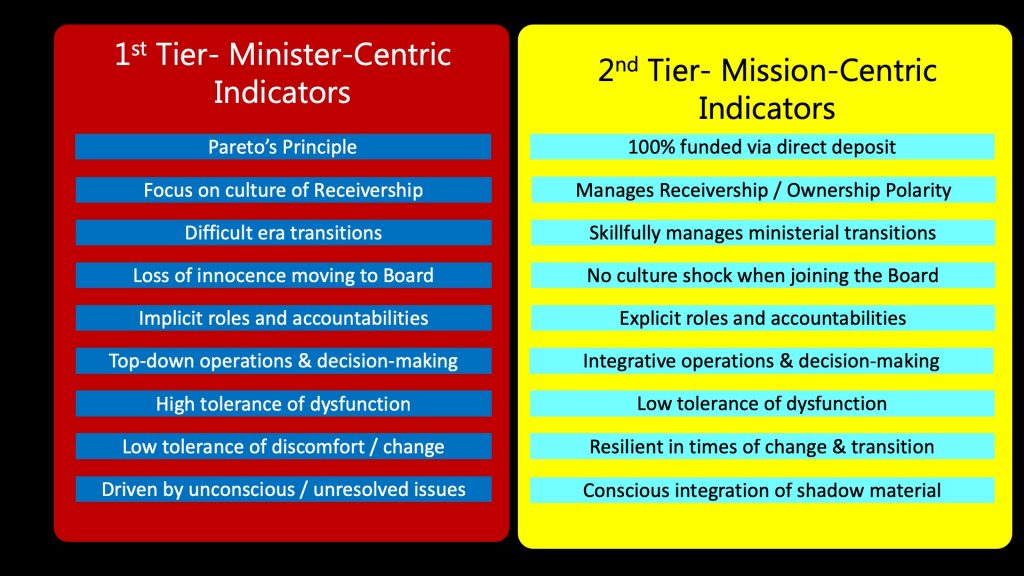
It is important to presence that in mission-centric ministry, the roles of the minister, board, and governing members quite different from minister-centric ministry.
The minister’s role shifts from being the primary care giver of the family system, to being a spiritual director and coach. The board’s role shifts from protectorship to partnership. The community of governing members’ role move from being the flock to become owner / partners in a spiritual cooperative. The emotional and spiritual maturity of the mission-centric ministry practice is integral to the process of transitioning out of the minister-centric practice.
Here is a short video where I discuss what I mean by mission-centric ministry.
In mission-centric ministry, the identity of the ministry arises from the felt experience of mission fulfillment in the lives of community members. In minister-centric ministry, the identity of the ministry is centered in the minister, or in the church’s story. When there are more stories about disappointments, hurts, and distrust than stories of transformation and making the difference, well….I think you get where I am going with all of this.

As more and more of us join the conversation about evolving out the plop, pay, pray model of ministry, greater clarity regarding the fullness of what is meant by mission-centric ministry will be possible.
Click here to read a blog post: Mission-centric Ministry-An Emerging Paradigm.